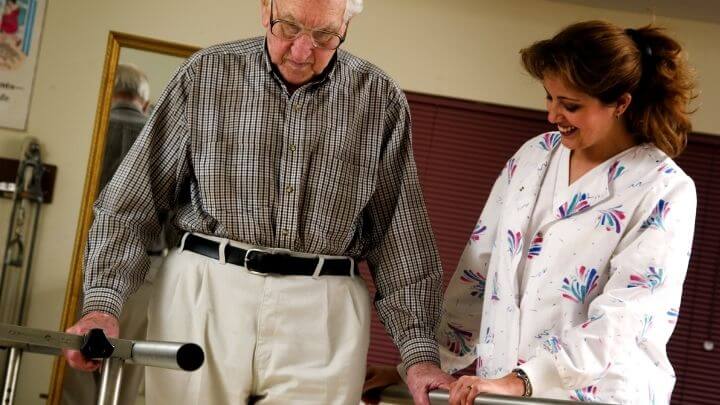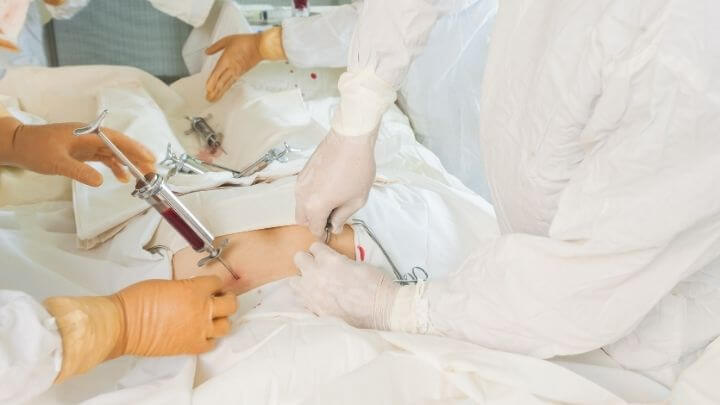Stem Cell Transplant Brings Hope to MS Sufferers
7 minute read
Multiple sclerosis is a chronic autoimmune disease, and one of the scarier diseases most people have heard of. More than 400,000 people in the United States have MS, and it affects 2.3 million people worldwide.
Multiple sclerosis (MS) affects the brain and spinal cord. Nerve damage from MS can cause symptoms like lack of coordination, fatigue, partial or complete loss of vision, dizziness, and problems with bowel and bladder function.
There is no cure for MS. Fortunately, a new stem cell treatment showed promise in an international study.
An Overview of Multiple Sclerosis
With MS, the immune system tells the body to attack myelin, the fatty material that surrounds and protects nerves. Without the proper amount of myelin to protect them, nerves can become damaged. This can lead to miscommunication of the nerves and can result in symptoms such as trouble walking, tremors, and numbness or tingling.
| Related: Autoimmunity Recovery: Treating Inflammation |
MS is usually diagnosed between the ages of 20 and 40, though it can be diagnosed at any age. Women are twice as likely as men to develop MS, and genetic and environmental factors may also play a role.

Though it’s unclear what the data means, colder climates see more incidents of MS than warmer ones do. MS is most common in people of Northern European descent, while Native Americans, Africans, and Asians are the least at risk.
Some viruses have been linked to MS, including Epstein-Barr, the virus that causes mononucleosis. In some cases, symptoms of MS develop after a bout of a virus.
Current Treatments For Multiple Sclerosis
There is not yet a cure for MS, but research is ongoing and there are treatments available.
| Related: Researchers Find Parkinson’s and Gut Flora Link |
One such treatment includes disease-modifying drugs, which reduce inflammation in the central nervous system, reduce the severity and frequency of MS attacks, lower the number of relapses, and may slow the progression of disability due to myelin and nerve damage.
There are other treatments available that deal with managing the symptoms of MS rather than treating the disease itself.

Physical therapy can help muscle weakness, especially in the legs or when the patient has problems with his or her gait.
Muscle relaxants can be used to alleviate painful or uncontrollable muscle spasms.
Other medications may also be prescribed to treat symptoms like fatigue, depression, pain, bladder or bowel control problems, and sexual dysfunction.
| Related: Daily Probiotics to Help With IBS |
A patient may also choose to try complementary and alternative medicines in addition to conventional treatment. These complementary and alternative medicines include vitamin D, exercise, acupuncture, stress management, chiropractic therapy, cannabis, massage, and diet.
Stem Cells 101
Stem cells are the cells from which all other cells are formed. They are the only type of cells in the body that can do this.
When they divide, the new cells (daughter cells) either become new stem cells or they differentiate into specialized functions, such as blood cells, brain cells, muscle cells, or bone cells.
| Related: “Anxiety Cells” Further Our Understanding |

Stem cells can come from several different sources:
Embryonic Stem Cells: Embryonic stem cells come from embryos that are three to five days old. They can become more stem cells or any type of cell in the body.
Adult Stem Cells: Adult stem cells are found in small amounts in most tissues, but are most commonly taken from bone marrow. New research is being conducted to test if adult stem cells can differentiate into any kind of cell.
Altered Adult Stem Cells: The genes in adult stem cells can be altered to behave like embryonic stem cells.
Perinatal Stem Cells: These stem cells come from amniotic fluid and umbilical cord blood and can change into specialized cells.
Stem cells are being used in stem cell therapy (regenerative medicine) to repair tissues that have been damaged or are not functioning properly.
For stem cell therapy, the cells are grown in a lab and guided to become the required type of cell, then are implanted into the patient, where they can help repair and rebuild tissue.
The Treatment and Study
An international study was reported to the European Society for Bone and Marrow Transplantation in Lisbon which involved 110 participants with active MS who had not responded to disease-modifying medication.
Half of the participants stayed on their medication and the other half underwent haematopoietic stem cell transplantation (HSCT), which is stem cell therapy that uses adult stem cells from bone marrow.

Chemotherapy was first used to destroy the malfunctioning immune system, and then stem cells are re-infused.
After a year, only one patient who received the HSCT treatment experienced a relapse compared to 39 patients in the control group.
After three years, the transplants failed in only three out of 52 patients. In addition, the patients who received the HSCT treatment experienced a reduction in disability while symptoms worsened in the control group.
Researchers are very hopeful for what transplants can do for MS patients. Some of the patients are now symptom-free and can live without planning their lives around their MS.
Experts have been skeptical about this kind of treatment, but these positive results will hopefully open the door to further research and more clinical trials to establish HSCT as a routine treatment for MS.
The Bottom Line
While MS continues to be a problem for millions worldwide, innovative research is progressing our ability to treat and combat the disease.
A new clinical trial in which adult stem cells were used to heal the malfunctioning immune system had extremely positive results. Patients responded much better to the treatment (HSCT) than the traditional medications for MS.
Some MS patients who received the treatment no longer experience symptoms of MS. While this isn’t a “cure” by any means, it does bring hope to truly stopping this disease somewhere down the line.












